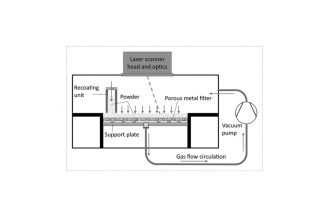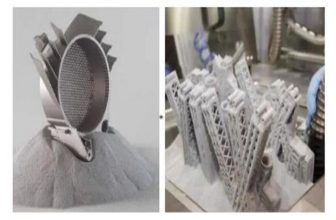
A large part of the US 3D printing manufacturing capacity is dedicated to the manufacture of drone parts. Unmanned aircraft bombed the defensive world, and every branch needs unmanned aircraft (UAV). Global drones, carrier-based drones, brigade-class drones, human-loadable drones, and drones that fit your palm are all in production.
With so many ongoing projects, the huge opportunities presented by the drone market have enabled many companies to win contracts. Many new iterations make these processes better. Changes have been made so that it can be made suitable for use by the Coast Guard, or a new camera system can be quickly added to an existing airframe. After many of these drone projects are put into production, they continue to be produced using 3D printing.
Many parts (such as fuel tanks, housings, and brackets) made by 3D printing at the prototype stage are now simply put into production. This is indeed quite unique, which means that in a drone environment with relatively low requirements and low standards, we have a lot of 3D printed parts flying. 3D printing and drones are indeed a match made in heaven. In this series, we will introduce in detail how drones can change the face of modern warfare and how 3D printing can play a role in its development. We will also build on the concept of drone swarms that I wrote in 2016 and talked about in my 2015 keynote. Then, we will see how drones are changing the face of the battlefield.
This is an indicative list to show you:
What is the use of drones?
The drone can be used to see farther: buildings, next hills, mountains or continents.
The drone can be used to view the inside: the room next door, the building next door or the room on the other side of the world.
. UAVs can become a sensor platform that can retrieve useful data.
. Drones can be used to listen to the movement of trucks or track heat or find specific vehicles or chemicals.
. UAV is used to obtain weather data of a specific location.
The drone can update your map with photos taken yesterday.
. UAVs can be used to track the movement of individuals, troops or mass troops.
UAVs can act as decoys by spreading chaffs, imitating the actions of troops, or imitating missiles or airplanes.
The UAV can bring real-time information to various fighters, platoon leaders, general or political leaders.
The drone can bomb or aim the missile at the target.
The UAV can be used as a “shock force” or as a difficult role, such as anti-SAM, to assist conventional fighters.
. UAVs can be used to patrol or patrol areas of interest.
Can shoot down drones without losing their lives, which can make wars more politically acceptable and allow you to use air forces in areas that are denied or tricky.
Drones are an inexpensive way to accomplish certain air-related tasks: per hour of flight or as a total investment.
The development cost of drones is relatively low, so specific drones can be manufactured for specific tasks.
. Drones can be used to place specific equipment in specific locations.
The drone can be used to identify and specify targets, and use lasers to “illuminate” the targets.
The UAV can be used as a regionally identifiable weapon.
. Drones can block or obstruct transmission.
. UAVs can be used for logistics.
The UAV can be used to insert a single fighter jet or a group of fighter jets somewhere.
For example, drones can be used to wait on the ground and then ambush when troops pass.
. UAVs are used as a deterrent to prevent people from entering an area.
As you can see from the above list, there are many uses for drones on the battlefield. We just have a new way of flying, which is generally cheaper than manned aircraft. Since this new way of flying brings many new companies and new plans, more competition leads to more competitors, and has more positive effects on innovation and makes them more suitable for goals. In the United States, there are many low-cost platforms for different roles. According to Wikipedia data in 2014, the number of “RQ-11 Ravens” in the United States is 7,362; Aviation Hornets III990; 1,137 AeroVironment RQ-20 Cougars; 306 RQ-16 T-Hawk small UAS systems and 246 MQ-1 predators And MQ-1C Gray Eagle; 126 MQ-9 Harvesters; 491 RQ-7 Shadows; and 33 RQ-4 Global Hawks. “The black Hornet Nano fits in the palm of your hand and can be used to enter buildings, while the “Global Hawk” or “Grey Hawk” can fly across the globe.
These high-tech drone systems have been released in the United States for more than 25 years and were first put into public service in the 1990s. Their sheer number and scope, coupled with the fact that they have been working for more than thirty years or more, may surprise you.
Black Hornet Nano
The biggest surprise is indeed how long the drone has been in service, and the effective drone. During the Vietnam War, the US military deployed a large number of reconnaissance drones. In 1966, the United States used the Ryan 174 long-arm weapon as a decoy to lure the advanced Soviet air defense system S-75. S-75 fired on the drone and destroyed it. However, just before this, the drone’s sensors received the S-75 fuze signal, which was used to counter the American airborne early warning system AN/APR 26. For S-75, in order to avoid it. The use of drones in this way is crucial to the U.S. war in Vietnam, because “The S-75 shot down 1,046 aircraft, which accounted for 31% of the total number of U.S. aircraft shot down.”
Other countries have also used the Ryan model 147:
In Syria, its air defense system shot down two Israeli drones, which attacked Syrian positions in eastern Lebanon and southwestern Syria. An Israeli military spokesman in Tel Aviv confirmed the loss of a drone. Western military sources said that Israel has been using drones to test the radar frequency and response of Syrian surface-to-air missile batteries and provide aerial reconnaissance of Syrian positions. UAVs played an important role in the conflict between Israel and Syria in 1982. They can find and eliminate radar systems and SAM sites, and provide accurate reconnaissance data. In the Bekaa Valley, the drone was sent into the Syrian air defense system in Syria. Once the Syrian radar is illuminated and missiles are fired at the drone, Israel will be able to use its attack aircraft to accurately target and destroy the entire air defense system in the area. Prior to this process, Israel had lost a quarter of its fighter jets, and this mission is crucial to Israel’s victory. Given that the United States had previously fought against Vietnam’s air defense system against Russia, Israel’s victory over the Bekaa Valley had a huge impact on shaping the future of air warfare. In the end, the United States used drones in large numbers in the Iraq War.
Israel has also used unmanned aircraft very early, so the effect is very good, as early as 1969 during the “Six-Day War” for extensive reconnaissance. To be sure, the country used an improved version of the Ryan Firebee drone in the Yom Kippur War in 1973, which achieved great success. On the second day of the war, the Israeli Air Force deployed armed Firebee drones to attack the Egyptian air defense forces along the Suez River. The Egyptians fired 43 surface-to-air missiles at Firebee. Firebee successfully evaded 32 missiles and destroyed 11 Shrike anti-radar missiles.
Another simpler drone, Northrop Chukar, is also very effective. “Twenty-three Northrop Chukas were launched, 18 returned, and 5 fell. Each group of 2 to 4 UAVs attracted 20 to 25 Egyptian rockets, proving the effectiveness of the system.”
This is a critical moment in the use of drones in combat. In the second half of 1992, “a squadron of scouts participated in an attack on a Hezbollah convoy, and the organization’s secretary-general Sheikh Abbas Mousavi was killed. The drone was used to locate vehicles, aim and Report the results of the attack. This is the groundbreaking use of drones in targeted hunting. The drones were used only as dumbs. In the 1950s, they were towed behind the aircraft as a hit device, but in the 60s, 70s and It became the winner of the war in the 1980s and became a tool of the eternal “anti-terrorism” war in the 2000s. Around that time, the future of 3D printing was closely intertwined with the future of drone warfare.
Comment: UAVs make war easier and reduce costs. As drones entered the battlefield, thousands of civilians around the world were killed by drone strikes. Although they reduce the loss of life of pilots, contradictory drones may be more prone to manslaughter because the political cost of sending drones is lower than the political cost of sending airplanes. I am not advocating that drones and related developments are a good thing, nor should I generally praise their progress. However, drones have become a reality, and as we will see in the rest of this series of articles, drones are becoming more and more important for warfare and 3D printing.





